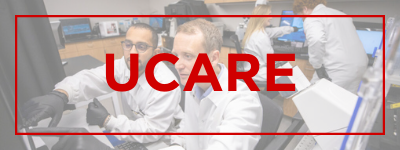UCARE: Undergraduate Creative Activities and Research Experiences

UCARE: Research Products
Date of this Version
Spring 4-10-2016
Document Type
Poster
Citation
Spring 2016 Research Fair poster, University of Nebraska-Lincoln.
Abstract
In order to learn more about the effects alcohol has on the body, we investigated its effects on the circulatory system. Our bodies’ circulatory systems are the main way that we transport chemicals to where they are needed. One of the major roles of the blood, is the role of the red blood cells, which bind to and transport oxygen molecules to our cells where they can be used for cellular respiration. Without the transfer of oxygen, cellular respiration would not be possible, and without cellular respiration, our cells cannot produce adequate amounts of energy.
Hemoglobin proteins in the red blood cells are what make oxygen transfer possible. Hemoglobin is made up of four subunits—two alpha subunits and two beta subunits—and each subunit has a site which can bind to a substrate. In our bodies, that substrate is an oxygen molecule, We call this oxyhemoglobin, and our bodies have ways of making sure that our hemoglobin stays in this form. Over time however, hemoglobin will loose its oxygen molecules, and instead bind to water molecules. This form is called aquamet hemoglobin, and it cannot be used by our bodies. Our goal was to explore how the consumption of alcohol affected this transformation of hemoglobin. We measured the amount of oxyhemoglobin by analyzing the protein absorbance peaks, and we hypothesized that the addition of alcohol would result in a faster accumulation of aquamet hemoglobin.


Comments
Copyright (c) 2016 McKayla Wieczorek & Hideaki Moriyama.